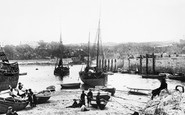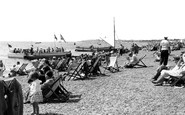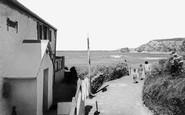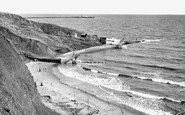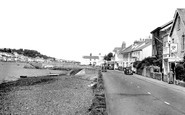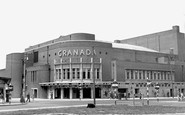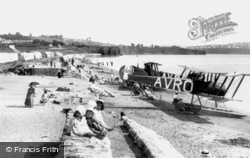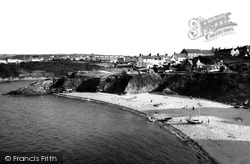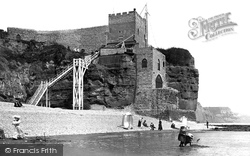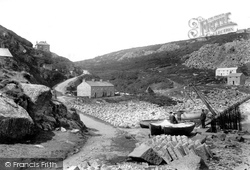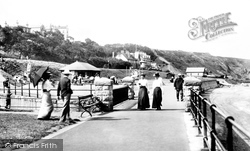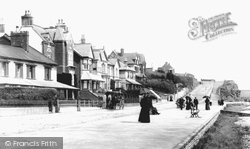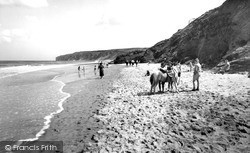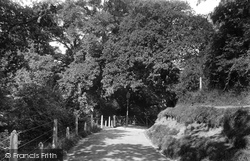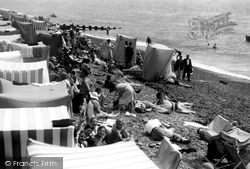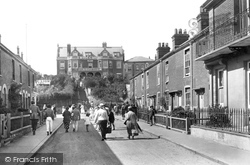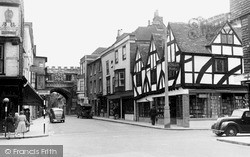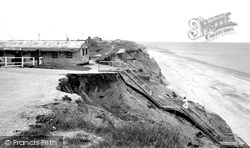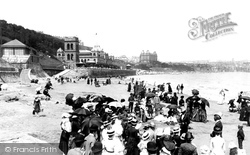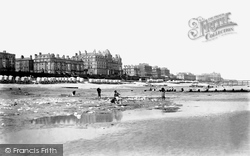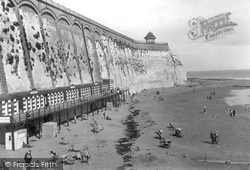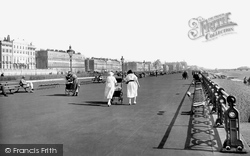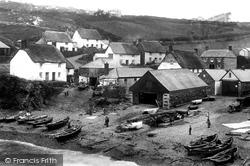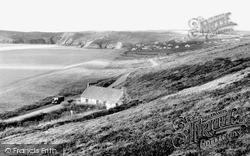Places
12 places found.
Those places high-lighted have photos. All locations may have maps, books and memories.
Photos
191 photos found. Showing results 521 to 191.
Maps
115 maps found.
Books
1 books found. Showing results 625 to 1.
Memories
1,374 memories found. Showing results 261 to 270.
'the Annie'.
The owner was my grandfather George Rowe. My father, his son, was born in Tenby in 1905 and died in late 1999 aged 93 years. You might be interested to learn that the boat (M26) in the middle of your picture was called ''The Annie'' and was ...Read more
A memory of Tenby by
West Beach 1948 1966
This beach was the one we used to make our way to on a regular basis when we were staying at Shoebury Hall Farm campsite. We used to take the boat trip out to the Mulberry Harbour. Cannot for the life of me remember the ...Read more
A memory of Shoeburyness by
Happy Times In Groes Village
Knowing where to start with the many memories that I have of Groes Village is difficult. For many years my brother and I were dispatched, from our home in Hertfordshire, for the entire school summer holiday to stay ...Read more
A memory of Margam by
Sam The Peanut Man And My Holidays In The 60s
I love Leysdown. In fact when our boys were little we used to take them there. They in turn go there now. My dad couldn't drive so our uncle used to have a caravan on Harts Farm and we used to ...Read more
A memory of Leysdown-on-Sea by
Redcar Pavilion
I remember my Grandmother, May Gray and Pop my Grandfather, William Gray, used to go to the Pavilion Theatre which is now, I think, the Cinema over the beach. She used to watch a man called Billy Breem who later became Larry Grayson ...Read more
A memory of Redcar by
Smugglers Cottage
This photo was taken the year before my Father and Mother bought Smugglers Cottage guest house. We lived there from 1966-72. We took over from the Teasdales in the April, I recall meeting their daughter Dulcie the day my Mum ...Read more
A memory of Portreath by
Walking To Walton In The Early 1960s
My grandparents lived in Frinton-on-Sea from 1959 and as a child I would regularly stay with them in their bungalow for a week or so each school summer holiday. Every holiday my brother and I looked ...Read more
A memory of Frinton-On-Sea by
Visits To Relations
In the 50's / 60's I remember visiting Aunty Agnes , Uncle Trevor and Derek Hughes who I believe were relations of my Mum's. Uncle Trevor was in a male voice choir ..... Aunty Mary, the sister of Agnes lived in Llysfaen ...Read more
A memory of Rhyd-y-foel by
Family Home
Ahh Instow.. Always in my heart. Gran moved from Plymouth to Bickleton (2mls inland from Instow) c1930. Mum (Nancy Rooke) went to Instow school. During the war years she met Dad (Ron) married (1942) and moved to Staines where I grew up. ...Read more
A memory of Instow by
Battersea
I was born in Church Road, Battersea in1939 and went to Bolingbroke School - 1944 to 1950, then on to Surry Lane. Did not have much in those days, but were very happy times. Swimming in the Thames, looking for old iron on the beach to ...Read more
A memory of Battersea by
Captions
1,131 captions found. Showing results 625 to 648.
Seaplanes from the newly-formed Royal Air Force are pulled up on the beach - perhaps being used either for recruitment or anti-submarine duties.
The beach was used once a year by farmers from Llechryd for a feast.
At the foot of the ladder today, there is a short promenade with beach huts.
The walk along the fern-fringed lane to the rocky beach is unforgettable. The Newlyn artists were enthusiastic visitors here.
Its picturesque position on the cliffs of one of the noblest bays on the east coast of England, and its fine beach, along with its splendid hotels and handsome private houses, make Filey one of the most
Its own beach is sandless and full of large pebbles, which seem to sing as the tides play across them. It gets its name from the salterns, or salt pans, used by the monks of nearby Otterton Priory.
Situated at the southern end of Filey's long beach, the outcrop of Flamborough Head can be seen in the distance.
Such were the number of visitors navigating the overgrown and makeshift route from the town centre to the beach that the Windsor estate prioritised the construction of a more permanent path.
Its own beach is sandless and full of large pebbles, which seem to sing as the tides play across them.
There are plenty of changing tents on this beach, where a group of boys wave at the camera (centre foreground).
In this picture, guests are returning from the beach and are processing up to the hotel in order to get changed in time for their evening meal, which was often accompanied by soothing live music.
Street furniture is changing with the introduction of the ugly concrete street lamp post outside the timber-framed building that was Beach's bookshop.
More Americans died training here than were killed on Utah Beach on D-Day.
Here a lady can be seen trying to coax a child down the steps to the beach.
One Victorian dress would provide enough material for a dozen or more outfits today, when bikinis rule the beach.
The edge of the beach is lined with bathing machines in this view.
It was more popular with the locals, because it was away from the main beach. The prominent building on the cliff was part of Victoria Gardens.
These days, happily, the only active defences to be found at the resort are sand castles on the beach.
It deliberately provided fewer mass entertainment facilities than Brighton, which presumably accounts for the nearly deserted promenade and beach we see in this picture.
The beach is a clutter of boats and fishing paraphernalia. On the right is the lifeboat house and in the centre a sizeable boat shed, the home of the 'Marianna'. Crabbing is a local industry.
The full length of Grand Parade can be seen, as well as the central beach.
A change in sea level and erosion have combined to produce a fascinating effect off this beach, as documented by Giraldus Cambrensis: 'We then passed over Niwegal sands, at which place (during the winter
At this time, close to the end of the Victorian era, staying fully clothed on the beach was very much the norm, with sand castles and donkey rides the prime amusements for the children; the adults relax
Here we see National Trust shingle and cliffs at the end of Beach Road, with the buildings (top right) comprising the Burton Cliff Hotel.
Places (12)
Photos (191)
Memories (1374)
Books (1)
Maps (115)

